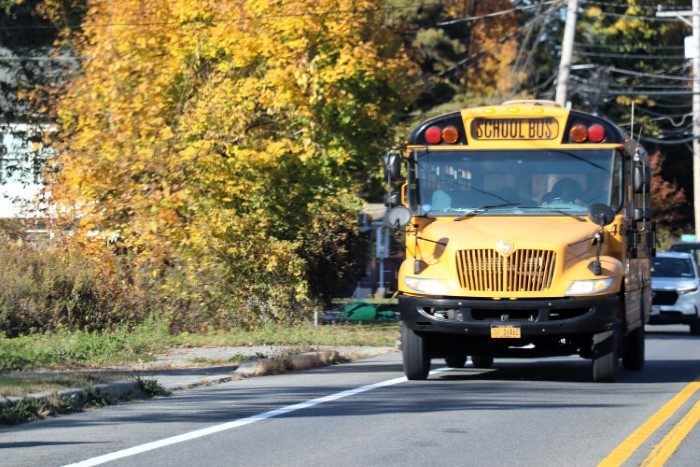 Shannon Mannese, CPA, Partner, RBT CPAs (photo provided)
Shannon Mannese, CPA, Partner, RBT CPAs (photo provided)
by Shannon Mannese, CPA, Partner, RBT CPAs
It’s that time of year again—school has started back up in New York. And with the new school year comes new state mandates, including a major policy change—no more smartphones in schools.
Beginning with the 2025-2026 school year, all New York public schools are required to implement distraction-free school policies. These policies must prohibit the use of non-school-issued internet-enabled devices during the entire school day (“bell to bell”) on school grounds. Such devices include, but are not limited to, cellphones, smartwatches, and tablets. The law applies to all public school districts, BOCES, and charter schools serving students in grades 7-12.
The policy includes certain exemptions to cellphone restrictions, such as when a cellphone is needed to manage a students’ healthcare needs (i.e., monitoring insulin levels), for an educational purpose authorized by a teacher or principal, for translation services, for use by a student in family caregiving, in the event of an emergency, and when included in a student’s IEP or Section 504 plan.
New York is the largest state to enact a statewide bell-to-bell smartphone restriction policy.
Policy Requirements
The law mandates that schools develop and implement distraction-free policies, beginning with the 2025-26 school year. Districts were required to adopt a policy by August 1, 2025. Local stakeholders, including teachers, parents, and students, must be consulted in the development of the policy. Policies must include a plan for storing devices and a method by which parents can contact their children during the school day. Schools can choose which storage solutions work best for their needs. The policy must be posted and accessible on the school’s website.
What funding is available for implementation?
Funding for policy implementation totals $13.5 million. Schools will be granted $10.90 per secondary student, based on 2023-2024 school year enrollment. These funds must be used exclusively to support distraction-free learning policies.
According to NYSED, allowable uses of funds include:
- Device storage, such as lockers, lockable pouches, and centralized secure storage.
- Policy development, including policy drafting and stakeholder consultation.
- Professional development to train staff on policy implementation and enforcement.
- Family and student outreach, including communicating and translating the policy.
- Student education to teach responsible device use.
- Other implementation costs (must be documented).
Why was the law passed?
The goal of a bell-to-bell distraction-free learning environment, according to the NYSUT Bell-to-Bell Local President Toolkit, is “to create a space where students can think critically, stay present, and build strong academic and social-emotional skills free from the pull of notifications or social media.”
Reasons for the law’s enactment include the following:
- To remove the influence of digital distractions during the school day.
- To encourage students to engage meaningfully with learning and with their peers.
- To protect youth mental health and support student wellbeing.
- To enhance educational outcomes.
What are the benefits of distraction-free learning?
According to NYSUT’s Bell-to-Bell Toolkit, the benefits of distraction-free learning include:
- Academic benefits: improved student focus, engagement, test scores, and academic performance, and more efficient use of instructional time.
- Social-emotional benefits: improved socialization in lunchrooms and hallways, stronger communication skills, decreased social anxiety, and reduced cyberbullying.
- Instructional benefits: fewer discipline referrals and fewer bathroom requests to check phones.
- Mental health benefits: decreased stress and anxiety, less social media-related drama, reduced bullying, and fewer visits to school counselors for mental health.
- Benefits for educators: improved staff morale and job satisfaction, more instructional time, and more meaningful interactions with students.
Many school districts that implemented distraction-free policies prior to the statewide mandate have already noticed positive impacts, including increased focus and classroom engagement, improved student interactions, decreased burden on teachers, a reduction in fights and suspensions, and improved test scores.
How We Can Help
While you focus on keeping your district distraction-free and navigating the state’s new mandates, remember that RBT CPAs is here to support all of your district’s accounting, tax, audit, and advisory needs. Call us today to find out how we can be Remarkably Better Together.
